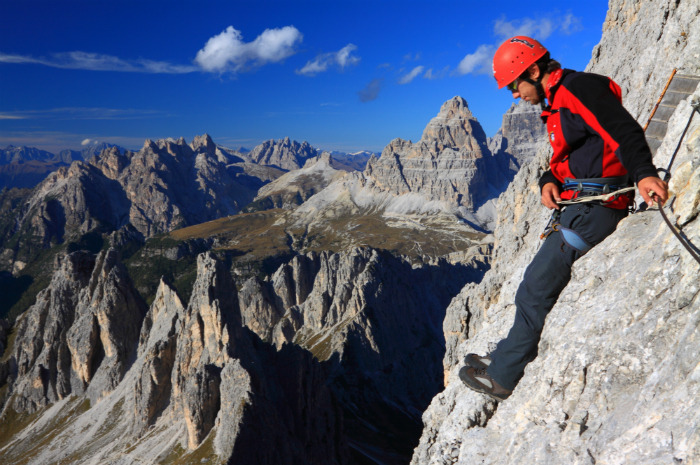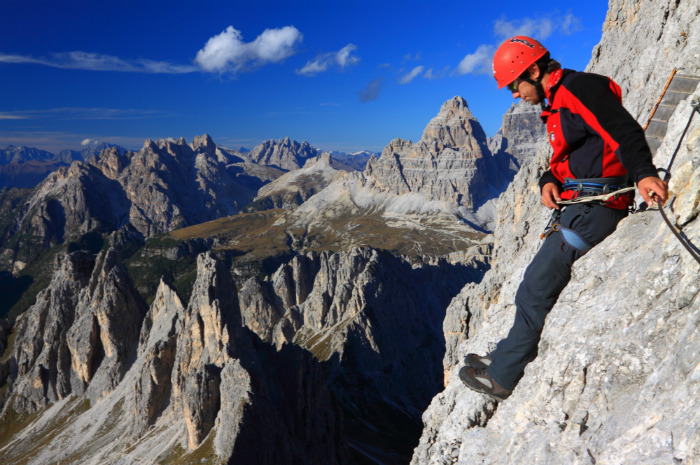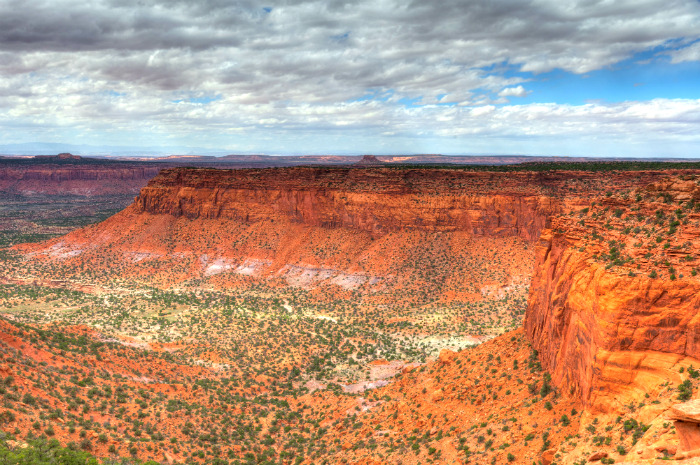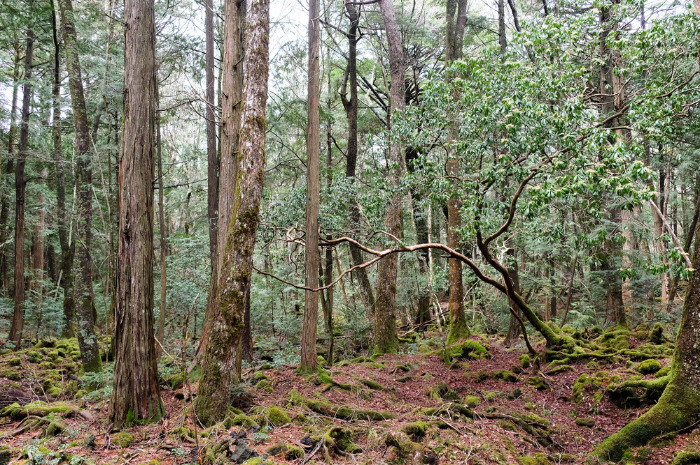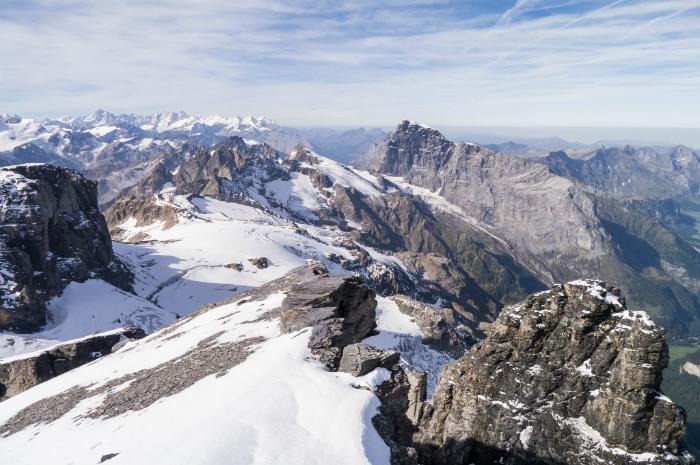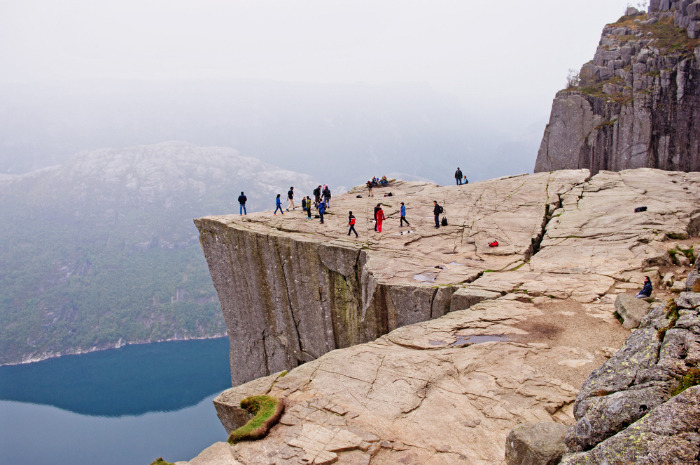The 15 Most Terrifying Trails Sure To Get Your Heart Racing
The 15 Most Terrifying Trails Sure To Get Your Heart Racing
When people imagine adrenaline-inducing experiences, they usually think of extreme sports or adventures such as kayaking down a gigantic waterfall. Terrifying walkways and epic trails are not an immediate thought, but there are some crazy paths out there. Thrill seekers from all over have found interesting hobbies and, frankly, they are terrifying. One of the most hazardous ways to enjoy what nature has to offer is by hiking.
GR 20, Corsica
GR stands for "grande randonnée" which means "great trek;" and this is exactly what you're going to get. This may very well be Europe's toughest mountain trek. Many call it the continent's hardest long-distance trek. It's worth the effort and challenge because you get to see remarkable scenery, magnificent colors and free roaming wildlife. You will walk through towering pinnacles, deep forests, windswept craters, glacial lakes, and snow-capped peaks, according to LeGR20.com.
The Maze, Canyonlands, Utah
Appropriately named, The Maze is definitely an easy place to get lost in. As the least accessible and therefore least visited district of the Canyonlands, visitors usually spend week-long trips in the area. The canyons are connected in a way that is truly a labyrinth. You're likely to hit a dead end anywhere you turn. The National Park Service warns that many of the hiking routes include sections of steep slick rock and pour-offs that require climbing maneuvers. You should always carry a topo map. If you get lost, stay in one place so it's easier for rescue teams to find you.
Via Ferrate, Austria and Italy
This suspension bridge along Monte Cristallo's Ivano Dibona route is one of the most famous and terrifying in the area. Frequently called "Cliff Hanger," it is one of the longest in the area and certainly not for the faint of heart. Instead of using ladders to cross, adventurers now use steel cables, ropes and wooden footpaths. No wonder the route is called Via Ferrata, which means "Iron Street" in Italian.
Aokigahara, Japan
Its nickname is "the Suicide Forest." The trekking in these woodlands is not that challenging but the feeling is very eerie. There are about 100 suicides reported each year. Japanese spiritualists believe that the suicides committed in the forest have permeated Aokigahara's trees, generating paranormal activity and preventing many who enter from escaping the forest's depths, according to Atlas Obscura. This is very creepy...
Aonach Eagach Ridge, Scotland
Tucked into the legendary Scottish Highlands, this route is just four miles from Glen Coe Valley but it goes through two summits. If the weather suddenly goes wrong — and you can expect it to — you are in trouble because the trail is very steep and grassy. There are no shortcuts. You will need a rope, especially if it has snowed a lot, harnesses, helmets, and a small climbing rack.
The Narrows, Longs Peak, Colorado
If you decide to conquer the peak, be prepared for lightning strikes, narrow ledges, and rock slides. An experienced hiker became the 59th fatality on Longs Peak, which is one of — if not the most —deadest peak in Colorado. Two-thirds of all deaths were the result of a fall — roped and unroped. Twenty people have died on the mountain for reasons other than falls, including six that had heart attacks, four suffering hypothermia, three struck by lightning, and three others by exhaustion and exposure.
El Caminito del Rey, Spain
El Caminito del Rey, or the King's Little Pathway, is a narrow walkway set against the walls of a deep gorge that's been called "the most dangerous path in the world." Originally constructed in the early 1900s as a route for hydroelectric power plant workers, the meager trail fell into severe disrepair over the course of the century. By the year 2000, following four fatalities in the previous year, the pathway was closed to the public and was under construction for more than a decade.
West Coast Trail, Vancouver, Canada
Hiking the West Coast Trail guarantees you an encounter with wild animals, especially bears, a walk through narrow gullies, and climbing shaky wooden ladders. The place is so dangerous, it is illegal to stay overnight in the off-season between October 1 and April 30. Technically, though, it can be done. But many expert hikers advise against it. Currents are too strong. Also, you can't just leave the trail. Are you going to swim? There is no easy way out.
Huayna Picchu Trail, Peru
The Huayna Picchu trek leads to a view point overlooking the Inca citadel of Machu Picchu. The trail loops around the very top of the mountain, where architectural vestiges such as altars, narrow staircases, tunnels and terraces can be found, according to The Only Peru Guide. If you are afraid of heights, this trail is not for you. This is a very a steep hike with some sections that will require the use of both hands and feet to scramble upwards.
Wendenstock, Swiss Alps
Routes here don't get narrower and more slippery – the ground is always wet because of the dew – than in the Wendenstock. This multi-summited mountain of the Uri Alps is where you should go if you ever want to see what a huge fall feels like. You fall in one place and find yourself meters away in a second. The trails are difficult to follow and navigating them is problematical.
Mount Hua Shan, China
This is one of the most dangerous and difficult trails you could ever hike. The highest point is 7,087 feet. The routes to the top are barely walkable because you walk on thin floating boards attached only by nails and giant "staples." You must hold on to cables at all times if don't want to find yourself flying down. The rickety old boards and steep rock face trails have led to many deadly accidents, but recent safety improvements have minimized the risk.
Mount LeConte, Tennessee
At 6,593 feet, it is the third highest peak in the park and the sixth highest in the whole Appalachian chain, according to Summit Post. Hiking conditions vary widely depending on elevation. The trail is very strenuous, but what really makes it scary for some adventurers are the bats and heights. The total elevation gain is more than 2,700 feet. The average elevation gain per mile is 500 feet.
Preikestolen, Norway
The rock never ceases to amaze. Preikestolen (or Pulpit Rock) is a top tourist destination in Southern Norway, attracting thrill seekers and daredevil photographers who just can't resist getting a glimpse off the edge of the 1,982-foot-high cliff. There are currently no fences and tourism officials say that would spoil the experience. But this is also what makes the tourist attraction very dangerous. What if suddenly a strong wind starts blowing?
Half Dome Cable Route, Yosemite National Park, California
Half Dome is about a 15-mile round trip hike with incredible views of Yosemite Valley and the High Sierra, but what it is most famous for is its cable section of the hike. The Half Dome Cables are two metal cables that help you to climb the last few hundred feet to summit. The National Park Service says that relatively few people have died on the cable route, but many get injured, especially when they are acting irresponsibly or weather conditions are poor.
Angels Landing, Zion National Park, Utah
This is definitely one of the most famous and thrilling hikes within the national parks system. You may want to opt out for a hike that is less intimidating if you are afraid of heights. The narrow and eye-popping hike in Zion's main red rock canyon will definitely test your limits when it comes to its dizzying drop-offs and deep chasm views. You'll walk along a narrow ridge with drop-offs on each side and pull yourself up a rock face by way of anchored chains.
